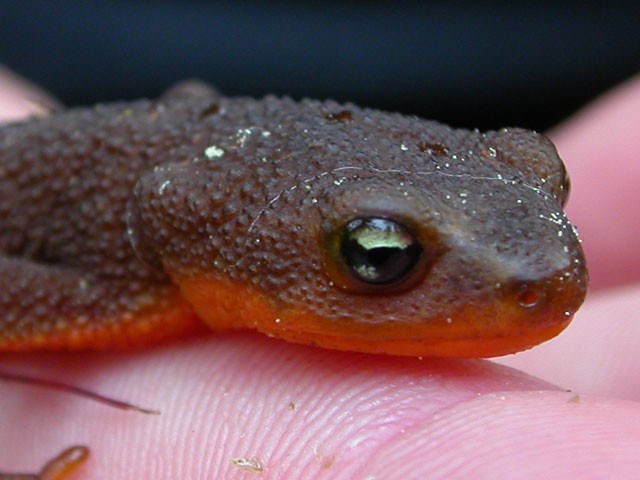Whistler Naturalists
Participating in the BioBlitz was a great experience. It gave a plant person like me a chance to get to know some of the critters in our valley. On display at Lost Lake (to name a few) were a deer mouse, a shrew, a garter snake, a northwestern salamander, western toads, sticklebacks, and some of the coolest bugs, slugs and worms I’ve ever seen. One creature that I saw for the first time in Whistler, shown to me by local expert Conner McGillion, was the Rough-skinned newt. Apparently this little creature carries one of the most toxic substances in nature.
The Rough-skinned newt is a type of salamander known as
Taricha
granulosa
in the science world.
Taricha
is Greek
for preserved mummy, possibly referring to the rough skinned appearance and
granulose
is Latin for full of small grains, referring to the rough
skin of terrestrial adults. Like other amphibians it breathes through its skin
and is highly sensitive to the environment it is in. It is a good rule of thumb
to never handle amphibians since any cream/sun screen/bug spray from a hand can
be harmful, and even the temperature of a hand can feel like a burn to the
little creatures.
The Rough-skinned newt is found along
the coast from California to Alaska, and the newt I saw during BioBlitz was
found in Lost Lake. Eggs are laid on submerged vegetation and hatched larvae
have
bushy gills, a large tail fin and balancers (a pair of appendages
projecting from the side of the head and arising before the forelimbs develop).
They will undergo metamorphosis into land dwelling
adults 4-5 months to a year after hatching, and after spending some time on
land will mate in quiet water habitats — where the cycle begins once again.
Adults are 10 to 20 cm in length and
from above they are brown, but from below they are a bright yellow or orange
colour. This bright colouring is a warning to potential predators that it is
toxic. When threatened the Rough-skinned newt will display a body posture
called the unken reflex,
a rigid U-shaped posture that reveals the
bright orange ventral coloration, and release toxic skin secretions.
If this anti-predator mechanism doesn’t work, this is when the Rough-skinned newt relies on its chemical defenses — a potentially fatal toxic substance when ingested. This toxic substance is called tetrodotoxin and is a potent neurotoxin that is concentrated in the skin, ovaries, muscles, and blood of adults. There is a story that a group of campers were once mysteriously found dead. After investigation, the reason for their deaths was discovered to be from drinking toxic tea caused by a Rough-skinned newt that had unknowingly crawled into their tea kettle.
Because of their toxicity the newt has few predators, with the exception of the Garter snake. Garter snakes and Rough-skinned newts have a great co-evolutionary tale. Through time as the Garter snake evolved a resistance to the Rough-skinned newt’s chemical defenses, the newt would develop defenses with greater and greater toxicity. Even today, highly toxic-resistant Garter snakes are found in areas with highly toxic Rough-skinned newts, whereas Garter snakes that are not as toxic-resistant are found in areas with Rough-skinned newts that are not as toxic.
It was great to see all those who participated in BioBlitz. If you didn’t get a chance to check it out, there’s always next year.




